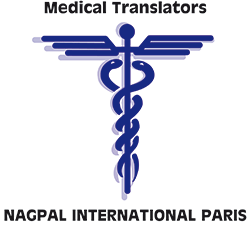
Paris • Cambridge • New-York
65, rue Pascal 75013 Paris France
Tel: +33 (0)1 47 07 55 28
Fax: +33 (0)1 43 37 11 46
E-mail:
Message du Président sur la Qualité
Contrôle Qualité: Conseils à nos Traducteurs
Sociétés pour lesquelles nous avons travaillé
Page de paiement en-ligne securisée
Exemples de traductions
Coronary angioplasty (French to English).
I) INTRODUCTION:
In the last 10 years, coronary angioplasty has become widely accepted as a technique for the treatment of coronary artery disease. However, balloon dilatation of the coronary lesion produces endothelial denudation and deep medial injury, resulting in exposure of collagen to the circulating elements in the blood (1). This disruption of the endothelium activates the clotting cascade with deposition and activation of platelets at the site of the lesion. This phenomenon is an important factor in the development of coronary artery thrombosis and reocclusion following coronary angioplasty. The release of platelet factors also probably plays a role in the phenomenon of restenosis (2). In this context, the preventive role of aspirin and anti-coagulant treatment with heparin against the risk of coronary artery thrombosis during and after coronary angioplasty has been conclusively demonstrated, especially in patients with unstable angina (3). Even so, the risk of acute coronary artery occlusion remains one of the weaknesses of coronary angioplasty, in particular in patients with unstable angina with complex lesions, thrombus in-situ or cases of non-optimal result after dilatation (residual stenosis > 30%, dissection, thrombus, etc.). It has recently been shown that powerful anti-platelet drugs such as glycoprotein IIb/IIIa receptor antagonists reduce the incidence of peri-angioplasty complications (4,5). The increasing use of intracoronary stents in angioplasty has also played an important role in the reduction of acute coronary occlusion post-angioplasty (6).
In addition to anti-platelet and anti-coagulant treatments, the nature of the contrast medium used can itself also influence the risk of complications after angioplasty. It has been recognized for many years that all contrast media have an anti-coagulant effect. Numerous in-vitro studies have demonstrated that ionic contrast media have a more pronounced anti-coagulant and platelet activating effect than non-ionic products (7-11). In-vivo studies have also shown that ionic products produce an increase in the activated clotting time (ACT), and have an inhibitory effect on platelet aggregation and degranulation (12-16). It has also recently been suggested that non-ionic products could reduce the efficacy of thrombolysis by altering clot structure and disturbing the polymerisation of fibrin (17-18).
This difference between low osmolar ionic versus non-ionic contrast media was confirmed experimentally by several animal model studies, including the one by Grines et al. (19).
Some authors have suggested a possible association between the advent of thromboembolic accidents during catheterisation and the use of non-ionic contrast media (20-21).
Several clinical studies have stressed the greater likelihood of ionic contrast media reducing the risk of thrombotic accidents during and after coronary angioplasty (Table I).
.